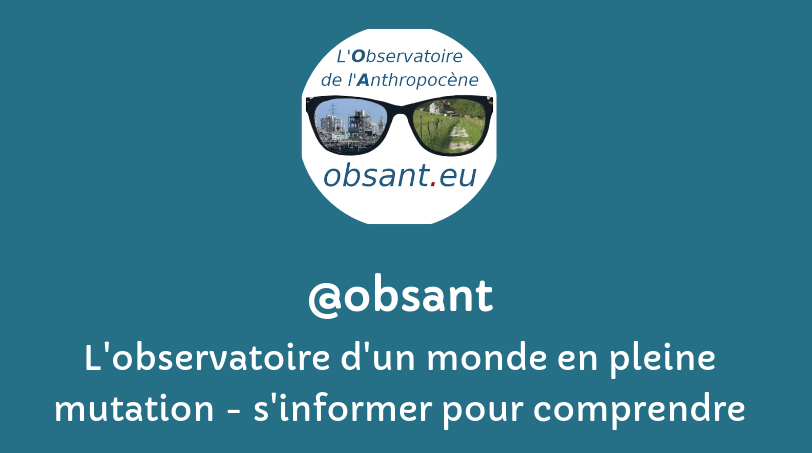Page de l’Observatoire de l’Anthropocène dédiée :
au groupe No Collapswashing sur FaceBook
à l’hashtag #nocollapswashing sur Mastodon
Le collapswashing, succédant au greenwashing, désigne non seulement la dissimulation des destructions environnementales mais dénonce également ceux qui font croire qu’ils préviennent les risques de déclin ou d’effondrement, alors qu’ils ne font que dissimuler ce qui décline ou s’effondre. Source : Vincent Mignerot
Les champs auteur(e)s & mots-clés sont cliquables. Pour revenir à la page, utilisez le bouton refresh ci-dessous.
filtre:
organization
26 août 2025
Purpose Animal emissions account for nearly 60% of total greenhouse gas emissions from the livestock sector. To estimate these emissions, the Food and Agriculture Organization of the United Nations (FAO) developed a dedicated module within the Global Livestock Environmental Assessment Model (GLEAM). Although previous studies have explored selected inputs for specific animals and emission types, a comprehensive analysis of all 92 inputs (parameters and emission factors) had not been conducted. This study aimed to identify the most influential inputs affecting ruminant emissions in GLEAM.
07 août 2025
Extreme heat is breaking records around the world, with wildfires and poor air quality compounding the crisis, according to a report from the World Meteorological Organization (WMO) released Thursday.
12 juin 2025
Un pattern mondial et des conséquences locales Une étude publiée le 4 juin 2025 dans Nature Ecology & Evolution, menée par des chercheurs de l’Université d’Umeå en collaboration avec l’Université de Reading, révèle un principe presque universel : Dans chaque région du globe, la biodiversité s’organise autour de "points chauds", des zones minuscules mais vitales, où la majorité des espèces apparaissent et se concentrent, avant de se raréfier en s’éloignant.
05 octobre 2023
Earth just had the hottest September on record – and by a record-breaking margin, according to leading international datasets which are used by the World Meteorological Organization (WMO) for its State of the Global Climate monitoring reports.
06 septembre 2023
Bonn and Geneva, 6 September 2023 (ECMWF and WMO) - Earth just had its hottest three months on record, according to the European Union-funded Copernicus Climate Change Service (C3S) implemented by ECMWF. Global sea surface temperatures are at unprecedented highs for the third consecutive month and Antarctic sea ice extent remains at a record low for the time of year.
30 août 2023
The UN Secretary-General’s Early Warnings for All Initiative (EW4All) is rapidly gaining ground. Action plans are being rolled out around the world to ensure that people know when dangerous weather is headed their way. Tajikistan has held a two-day national consultation, co-chaired by the Deputy Prime Minister and the UN Resident Coordinator in Tajikistan, and bringing together key stakeholders from state and international organizations, media and civil society. Ethiopia also held an inception workshop.
26 juillet 2023
According to ERA5 data from the EU-funded Copernicus Climate Change Service (C3S), the first three weeks of July have been the warmest three-week period on record and the month is on track to be the hottest July and the hottest month on record. These temperatures have been related to heatwaves in large parts of North America, Asia and Europe, which along with wildfires in countries including Canada and Greece, have had major impacts on people’s health, the environment and economies.
06 juillet 2023
It was the hottest June on record, unprecedented North Atlantic warmth, record low Antarctic sea ice
- World Meteorological OrganizationThe world just had the hottest June on record, with unprecedented sea surface temperatures and record low Antarctic sea ice extent, according to a new report.
24 mai 2023
WMO's annual State of the Climate in Europe report explores changes in climate indicators, extreme events and climate policy.
26 octobre 2022
WMO records biggest increase in methane concentrations since start of measurements
10 juin 2022
The publication provides a summary on the state of the climate indicators in 2021 including global temperatures trends and its distribution around the globe; most recent finding on Green House Gases concentration, Ocean indicators; Cryosphere with a particular emphasis on Arctic and Antarctic sea ice, greenland ice sheet and glaciers and snow cover; Stratospheric Ozone; analysis of major drivers of inter-annual climate variability during the year including the El Niño Souther Oscillation and other Ocean and Atmshperic indices; global precipitation distribution over land; extreme events including those related to tropical cyclones and wind storms; flooding, drought and extreme heat and cold events. The publication also provides most recent finding on climate related risks and impacts including on food security, humanitarian and population displacement aspects and impact on ecosystems.
09 mai 2022
There is a 50:50 chance of the annual average global temperature temporarily reaching 1.5 °C above the pre-industrial level for at least one of the next five years – and the likelihood is increasing with time, according to a new climate update issued by the World Meteorological Organization (WMO).
09 octobre 2021
With global warming intensifying the water cycle, floods and droughts are increasing, and many countries are unprepared.
27 mai 2021
There is about a 40% chance of the annual average global temperature temporarily reaching 1.5°C above the pre-industrial level in at least one of the next five years – and these odds are increasing with time, according to a new climate update issued by the World Meteorological Organization (WMO). There is a 90% likelihood of at least one year between 2021-2025 becoming the warmest on record, which would dislodge 2016 from the top ranking, according to the Global Annual to Decadal Climate Update, produced by the United Kingdom’s Met Office, the WMO lead centre for such predictions.
![]()



